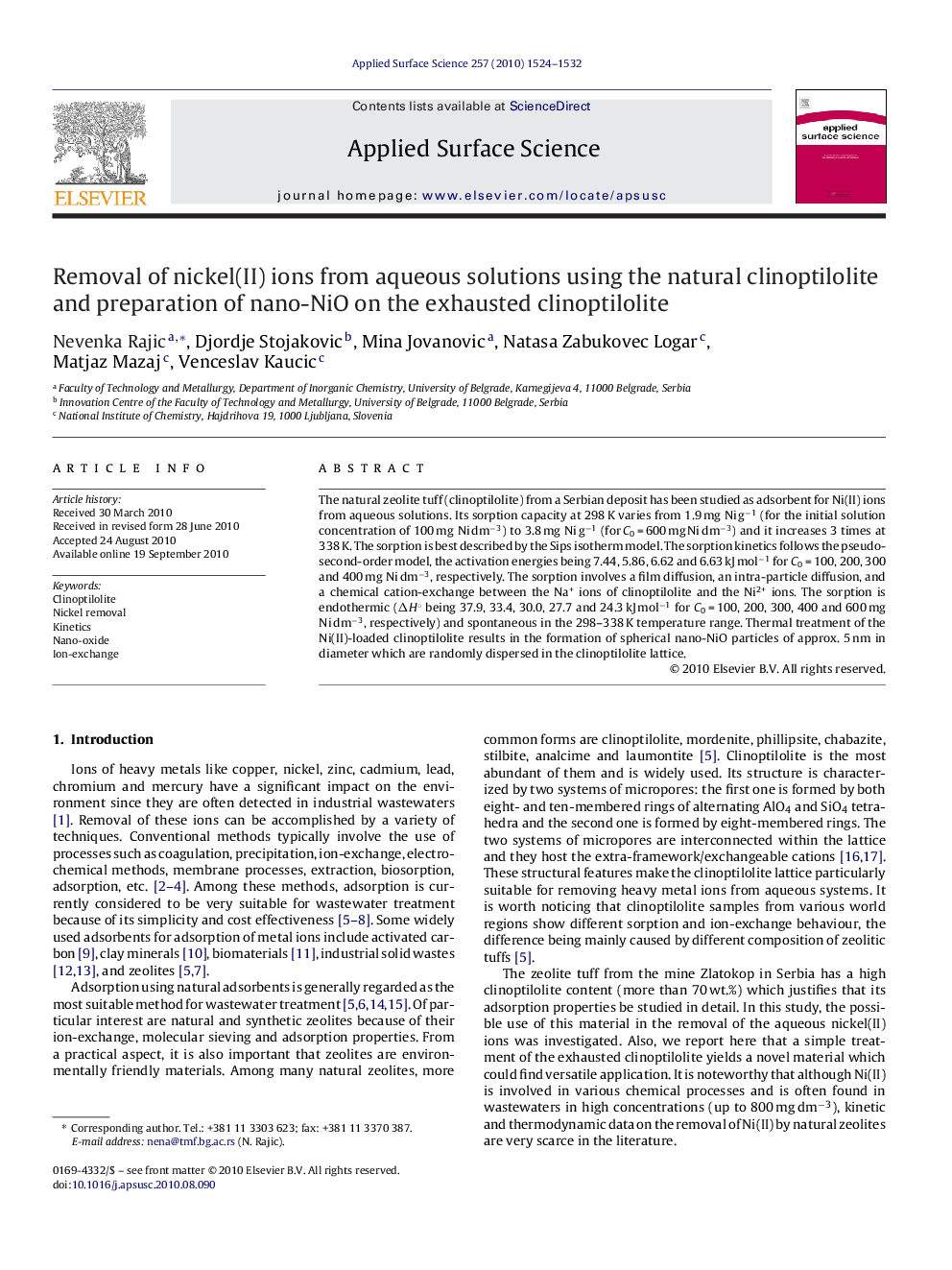| Article ID | Journal | Published Year | Pages | File Type |
|---|---|---|---|---|
| 5359503 | Applied Surface Science | 2010 | 9 Pages |
Abstract
The natural zeolite tuff (clinoptilolite) from a Serbian deposit has been studied as adsorbent for Ni(II) ions from aqueous solutions. Its sorption capacity at 298 K varies from 1.9 mg Ni gâ1 (for the initial solution concentration of 100 mg Ni dmâ3) to 3.8 mg Ni gâ1 (for C0 = 600 mg Ni dmâ3) and it increases 3 times at 338 K. The sorption is best described by the Sips isotherm model. The sorption kinetics follows the pseudo-second-order model, the activation energies being 7.44, 5.86, 6.62 and 6.63 kJ molâ1 for C0 = 100, 200, 300 and 400 mg Ni dmâ3, respectively. The sorption involves a film diffusion, an intra-particle diffusion, and a chemical cation-exchange between the Na+ ions of clinoptilolite and the Ni2+ ions. The sorption is endothermic (ÎH° being 37.9, 33.4, 30.0, 27.7 and 24.3 kJ molâ1 for C0 = 100, 200, 300, 400 and 600 mg Ni dmâ3, respectively) and spontaneous in the 298-338 K temperature range. Thermal treatment of the Ni(II)-loaded clinoptilolite results in the formation of spherical nano-NiO particles of approx. 5 nm in diameter which are randomly dispersed in the clinoptilolite lattice.
Related Topics
Physical Sciences and Engineering
Chemistry
Physical and Theoretical Chemistry
Authors
Nevenka Rajic, Djordje Stojakovic, Mina Jovanovic, Natasa Zabukovec Logar, Matjaz Mazaj, Venceslav Kaucic,
